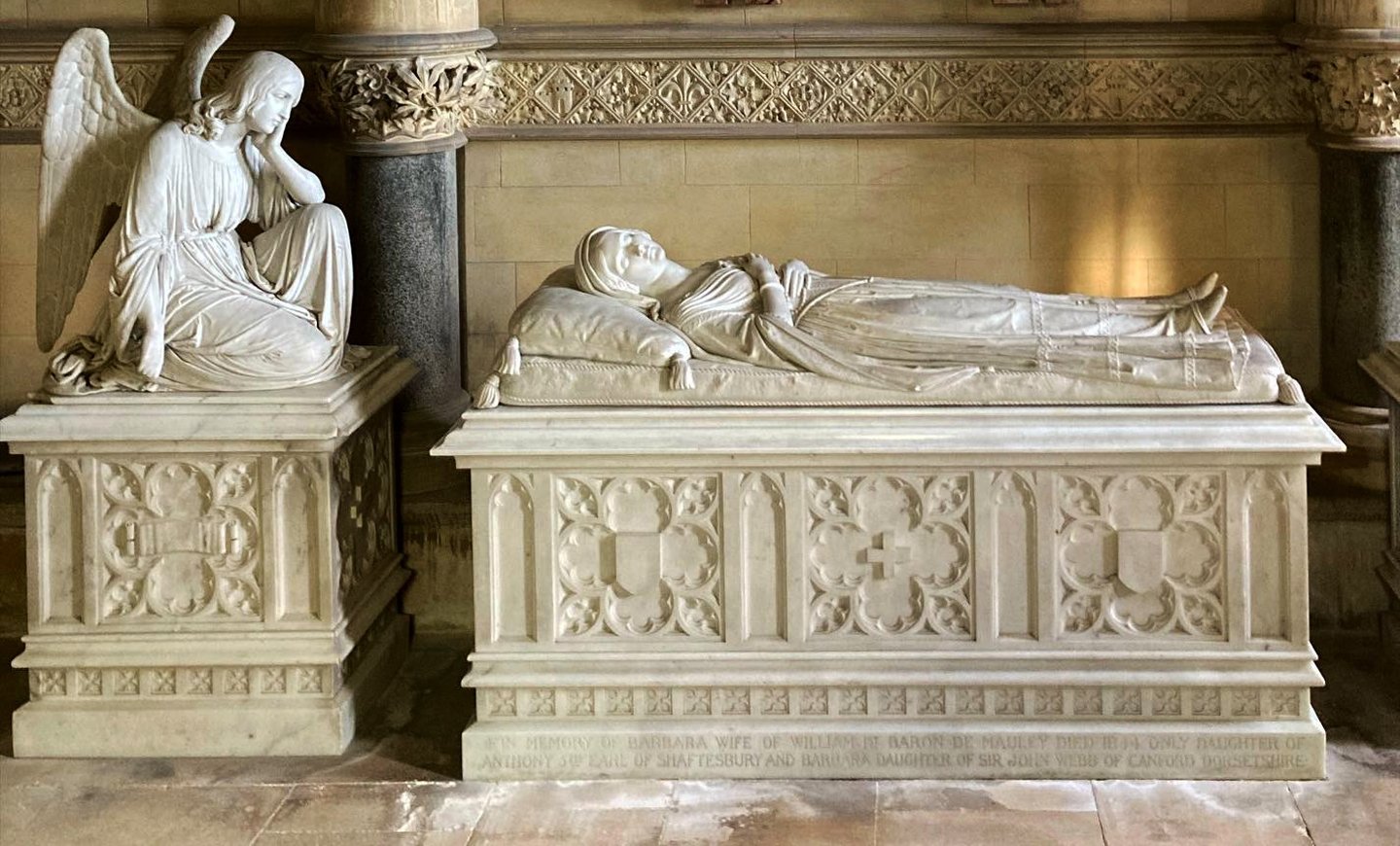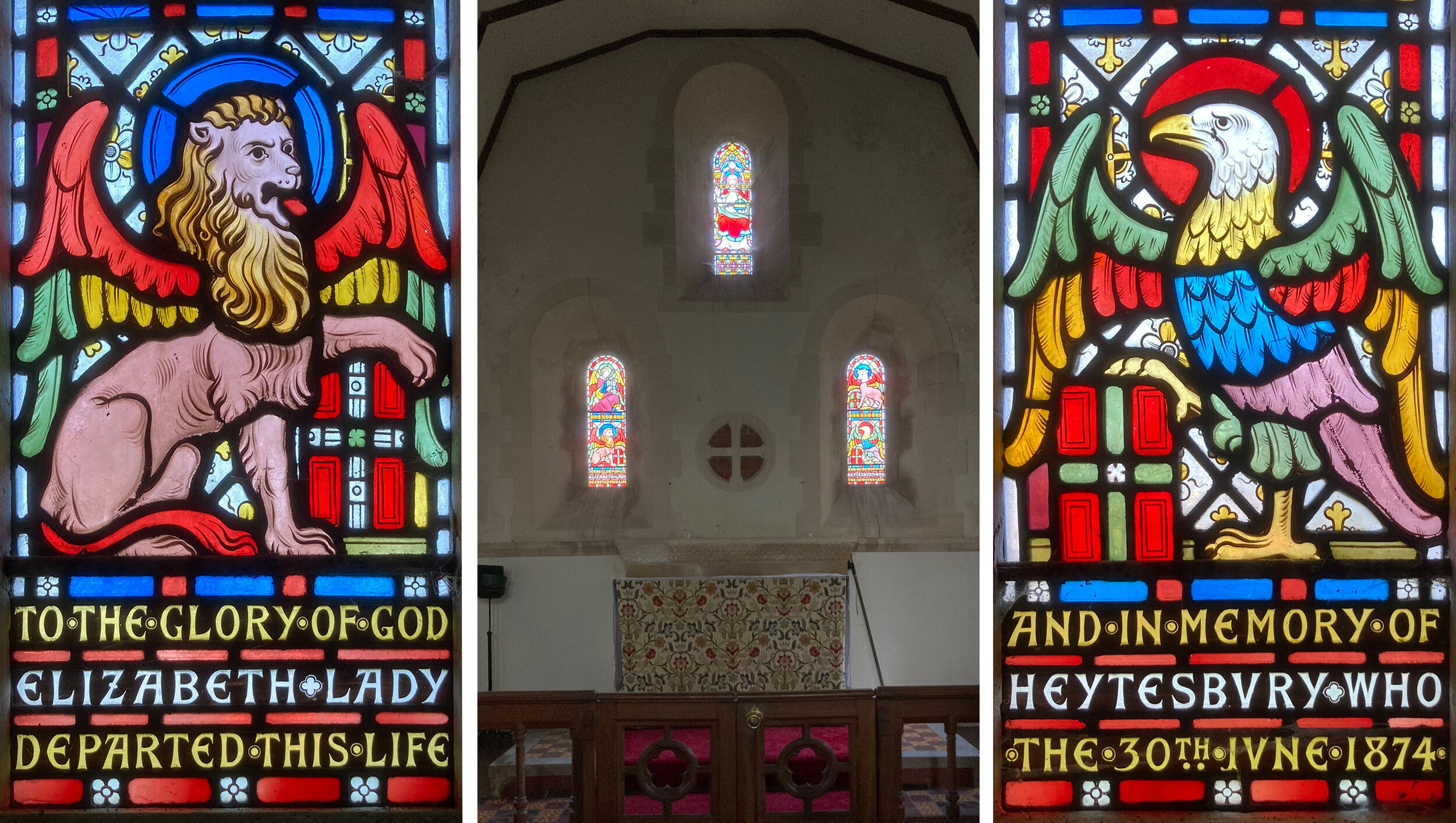St Margaret, St Margaret’s, Herefordshire.
The last church we visited on our trip to Hereford and back was St Margaret’s, the name of both the village and the church, which is in a field high up with a view of the Golden Valley to the east (above). It’s a beautiful spot, the small church is notable for its carved oak screen which is also a loft (below), a rare survivor from the Tudor period. Beyond the screen is a low chancel with more of the painted biblical texts on the walls and a wonderfully detailed east window by Archibald Davies, otherwise known as A.J. Davies of the Bromsgrove Guild.
St Margaret’s, Herefordshire, looking through the tudor screen.
The chancel, St Margaret’s with east window by A.J. Davies 1926
The window fits perfectly with the other features in the church in terms of its colouring, its size and its scale of detail with an oak leaf border that echoes the screen. It’s so satisfying to see this sort of harmony in a church interior - the wonderful details you find on closer inspection (below) are an added bonus.
Details from the A.J. Davies window that shows a scene from the life of St Margaret.
This window was the third I had seen on this trip where a low decorated chancel was beautifully complemented by a small east stained glass window. The other two were in Gloucestershire churches, both with a series of Norman arches carved with zig zags. At St John, Elkstone (below) zigzags also arch over the virgin and child window by Henry Payne who taught A.J. Davies at Birmingham School of Art.
The chancel, St John, Elkstone, Gloucestershire.
The features of this beautiful chancel are the vaulted arches with dragons’ heads where they meet and the amazing yellow light that fills the space through the south windows. The stained glass window is simple and fits in as well as an ancient one would. I always admire Payne’s flower details, here the floral border seems to nod to the Norman carving with the flowers contained by diamonds and separated by a string of circles.
Elkstone: left, looking through the norman arches: right, east window by Henry Payne 1929.
Kempley: left looking through the Norman arch: right, east window by C.E. Kempe 1876.
I found the most remarkable combination of stained glass and church decoration to be at St Mary, Kempley, a church that is famous for its Romanesque wall paintings. The paintings start in the nave and above the arch as you can see in the photo above left, then past the checked pattern under the arch to a low vaulted chancel. Once inside you are surrounded by a background of strong, earthy colours and the pale silhouettes of patterns and figures as the walls and ceiling are completely covered with frescoes that were painted around 1130 then covered over between the Reformation and the 1870s. The small east window by C.E. Kempe (above right) is in his familiar style but really looks at home here with a similar balance of pale silver stained figures against a dark red background, silhouetted by the light.
The chancel, St Mary, Kempley, Gloucestershire.
I was reminded of how much I value a small window, as opposed to metres of glazing. And how refreshing it is in a church to progress to a small, intimate space which, in all three cases, has a truly divine atmosphere.
St Mary, Kempley - no hint of what’s inside but a fabulously pink wall.






























